Contaminants
The extent to which Good Environmental Status has been achieved
Good Environmental Status (GES) has not been achieved for Descriptor 8 (D8) Contaminants. This is because:
-
Contaminant concentrations for four heavy metals (lead, mercury, copper, zinc) are above set assessment criteria in at least one assessed biogeographic region
-
Two other persistent pollutants (a polychlorinated biphenyl (PCB), and a polybrominated diphenyl ether (PBDE)) in sediments are above set assessment criteria in at least one assessed biogeographic region.
-
Heavy metal contaminant concentrations in biota also show an increasing trend in two of the assessed biogeographic regions, but overall trends remain stable. More detail can be found in the indicator assessments below.
-
Mercury is above the set assessment criteria for biota in all assessed regions.
Progress since previous assessments
The last assessment in 2019 concluded that GES had been largely achieved. The latest overall status for the relevant indicator assessments are set out in Table 1 and show that overall GES has not been achieved. This is primarily a result of the switch to using an environmental threshold for mercury in biota since the 2019 assessment period. The switch to an environmental threshold for mercury was needed as the food standard assessment criterium used in the past was not fit for purpose. The new environmental threshold better reflects the conditions biota are living in and provides a better understanding of environmental health and risks of impacts to biota.
Of the 13 individual indicator assessments, one (Micronucleus) showed significant downward trends, the others were stable. More detail can be found on trends in the relevant D8 indicator assessments (see below).
How progress has been assessed
Assessment overview
To determine whether GES has been achieved for D8, 13 indicators were assessed against three criteria and targets. These indicators look to measure concentrations and trends (where possible) across five chemical groups in biota, sediments, water and air, as well as measuring specific biological effects in fish and shellfish.
The indicator is determined not to have achieved GES when concentrations in biota or the environment are not significantly below the environmental assessment criteria (EAC) (e.g., environmental thresholds) for risk of environmental harm. For metals in biota and sediment, the indicator has not been met as there are exceedances of assessment criteria across all assessed regions. If individual components within indicators are not significantly below the environmental assessment criteria (EAC) in some regions the indicator will be considered partially met.
Table 1 sets out the three criteria, their associated targets and relevant indicators that were used to assess progress toward meeting GES for D8. For each, we set out whether it has been met, not met or partially met, across both the Greater North Sea and Celtic Seas regions.
Table 1. Summary overview of the status assessment for Contaminants (D8) indicator assessments
|
Criteria 1 |
Concentrations of contaminants in coastal and territorial waters |
|
2019 Target |
Concentrations of contaminants measured in water, sediment or marine biota comply with appropriate threshold values. |
|
Indicator |
Metals in biota and sediment |
|
Greater North Sea |
Not met |
|
Celtic Seas |
Not met |
|
Indicator |
Polychlorinated biphenyls (PCB) in biota and sediment |
|
Greater North Sea |
Partially met |
|
Celtic Seas |
Partially met |
|
Indicator |
Polycyclic aromatic hydrocarbons (PAH) in biota and sediment |
|
Greater North Sea |
Met |
|
Celtic Seas |
Met |
|
Indicator |
Polybrominated diphenyl ethers (PBDE) in biota and sediment |
|
Greater North Sea |
Met |
|
Celtic Seas |
Partially met |
|
Indicator |
Inputs of metals from water and air |
|
Greater North Sea |
Met |
|
Celtic Seas |
Met |
|
Indicator |
Radionuclides |
|
Greater North Sea |
Met |
|
Celtic Seas |
Met |
|
Indicator |
Chemicals status in water - wider chemicals |
|
Greater North Sea |
Met |
|
Celtic Seas |
Met |
|
Criteria 2 |
Health of species and condition of habitats |
|
2019 Target |
Biological or ecological effects on sea life due to contaminants are below thresholds agreed by OSPAR. |
|
Indicator |
The External Fish Disease Index |
|
Greater North Sea |
Met |
|
Celtic Seas |
Met |
|
Indicator |
7-ethoxyresorufin O-deethlyation (EROD) activity |
|
Greater North Sea |
Met |
|
Celtic Seas |
Met |
|
Indicator |
Micronucleus test |
|
Greater North Sea |
Met |
|
Celtic Seas |
Met |
|
Indicator |
Liver neoplasm |
|
Greater North Sea |
Partially met |
|
Celtic Seas |
Partially met |
|
Indicator |
Imposex in dogwhelks |
|
Greater North Sea |
Partially met |
|
Celtic Seas |
Met |
|
Criteria 3 |
Significant acute pollution events |
|
2019 Target |
The adverse effects of significant acute pollution events on the health of species and on the condition of habitats (such as their species composition and habitats relative abundance) are minimised and, where possible, eliminated. AND Occurrence and extent of significant acute pollution events are minimised. |
|
Indicator |
The number of spills including oil spills |
|
Greater North Sea |
Met |
|
Celtic Seas |
Met |
Two types of assessments were used to conclude that GES was not achieved. First is an integrated assessment using the OSPAR CHASE methodology, which is a mathematical method that included contaminants that were assessed against Environmental Assessment Criteria (EAC) in biota and sediment.
Table 2. Summary of OSPAR CHASE Environmental Assessment Criteria (EAC) used for contaminants in biota and sediment.
|
Contaminant |
Environmental Quality Standard (EQS) for biota |
EQS for sediment |
|
Metals |
Mercury (Hg) relative to the Environmental Quality Standard for secondary poisoning |
Cadmium (Cd) relative to the Effects Range Low, Mercury (Hg) relative to the Effects Range Low, Lead (Pb) relative to the Effects Range Low |
|
Polycyclic aromatic hydrocarbons* |
Polycyclic aromatic hydrocarbons (PAH) bile metabolites (1-hydroxy pyrene equivalents, PYR1OHEQ) relative to its Environmental Assessment Criterion |
Polycyclic aromatic hydrocarbons (PAH) relative to their Effects Range Low |
|
Non-planar polychlorinated biphenyls |
Non-planar polychlorinated biphenyls (np-PCB) relative to their Environmental Assessment Criteria |
Non-planar polychlorinated biphenyls (np-PCB) relative to their Environmental Assessment Criteria |
|
Dioxin-like polychlorinated biphenyls |
CB118 (the most toxic, dioxin-like PCB) relative to its Environmental Assessment Criterion |
CB118 relative to its Environmental Assessment Criterion |
|
Polybrominated biphenyl ethers |
Polybrominated biphenyl ethers (PBDE) relative to their Federal Environmental Quality Guidelines |
Polybrominated biphenyl ethers (PBDE) relative to their Federal Environmental Quality Guidelines |
|
Tributyltin |
Tributyltin (TBT) effects measured as Vas Deferens Sequence relative to its Environmental Assessment Criteria |
Not assessed within the UK |
*PAHs in shellfish did not include the CHASE assessment
The status assessment outcomes were classified as either good (contaminant concentrations below EAC thresholds) or poor (at least one contaminant has concentrations above EAC, or several contaminants are very close to EAC).
Second, a range of additional UK specific indicator assessments have been used to provide a wider view of chemical status and trends. These assessments provide a wider range of biological effects and chemical assessment than used in CHASE. Assessments include:
• Radionuclides
• Inputs of metals from water and air (common indicator with OSPAR – not assessed separately)
• Chemicals status in water
• The External Fish Disease Index
• Micronucleus test
• 7-ethoxyresorufin O-deethlyation (EROD) activity
• Liver neoplasm
• The number of spills including oil spills
Expert judgement has been used to combine these indicators with the CHASE assessment to provide a wider view of whether GES has been achieved.
Detailed assessments
The overall CHASE assessment (integration of biota and sediment contaminant assessment and imposex) shows that all four biogeographic regions for which data were available were above the CHASE score of 1 and so did not achieve GES (Figure 1).
Considering the CHASE assessment for biota and sediments separately, six biogeographic regions are above a CHASE score of 1 for biota and two out of four for sediments (Figure 2 and Figure 3, respectively) indicating that GES has not been achieved in these regions.
Figure 1. The CHASE score (coloured circle) for the combined biota and sediment assessment in each biogeographic region. The horizontal line is the associated 95% confidence interval. A score below 1 indicates that Good Environmental Status (GES) has been achieved. The red circle indicates that GES has not been achieved
Figure 2. The CHASE score (coloured circle) for the biota assessment in each biogeographic region. The horizontal line is the associated 95% confidence interval. A score below 1 indicates that Good Environmental Status (GES) has been achieved. The red circle indicates that GES has not been achieved.
Figure 3. The CHASE score (coloured circle) for the sediment assessment in each biogeographic region. The horizontal line is the associated 95% confidence interval. A score below 1 indicates that Good Environmental Status (GES) has been achieved. Blue: GES achieved. Red: GES not achieved.
Figure 4 and Figure 5 show individual contaminant ratio assessments for biota and sediments respectively. Concentrations were above internationally agreed assessment criteria for mercury (Hg) in biota in all regions and CB118 in only the Irish Sea region. PBDEs in biota are below the Federal Environmental Quality Guidelines (FEQG) assessment criteria indicating no environmental harm, however, are greater than human health PBDE standards used for the Water Environment (Water Framework Directive) Regulations. Hg and lead (Pb) in sediments were above internationally agreed assessment criteria in the Southern North Sea and Pb was also above these criteria in the Irish Sea.
The assessment outcomes of the indicators not considered by CHASE are summarised in Table 1 and further detail is available in the separate indicator assessments. These show that for these additional indicators GES has largely been achieved. Using an expert judgement approach to combine these outcomes with the mathematical CHASE assessment, it is concluded that GES has not been achieved because of the non-compliance of ‘Metals (Hg, Cd, Pb) in sediment and biota’.
Figure 4. The contaminant ratios (coloured circles) that underpin the CHASE score for biota in each biogeographic region. Ratios greater than 1 indicate that contaminant levels exceed the Environmental Assessment Criterion (EAC) or equivalent threshold that defines Good Environmental Status. A ratio is significantly below the EAC or equivalent (p < 0.05) if its upper one-sided 95% confidence limit (not shown) is less than 1. Light blue: the contaminant ratio is significantly below the Background Assessment Concentration (p < 0.05). Dark blue: the contaminant ratio is significantly below the EAC (p < 0.05). Red: the contaminant ratio is not significantly below the EAC (p > 0.05). Black: a modelled value is used because insufficient data are available.
Figure 5. The contaminant ratios (coloured circles) that underpin the CHASE score for sediment in each biogeographic region. Ratios greater than 1 indicate that contaminant levels exceed the Environmental Assessment Criterion (EAC) or equivalent threshold that defines Good Environmental Status. A ratio is significantly below the EAC or equivalent (p < 0.05) if its upper one-sided 95% confidence limit (not shown) is less than 1. Light blue: the contaminant ratio is significantly below the Background Assessment Concentration (p < 0.05). Dark blue: the contaminant ratio is significantly below the EAC (p < 0.05). Red: the contaminant ratio is not significantly below the EAC (p > 0.05).
Achievement of targets and indicators used to assess progress in 2024
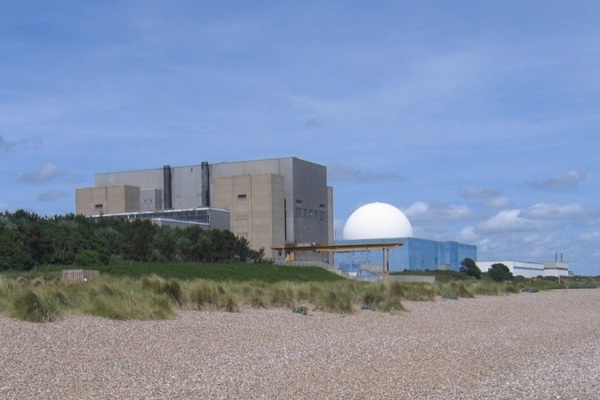
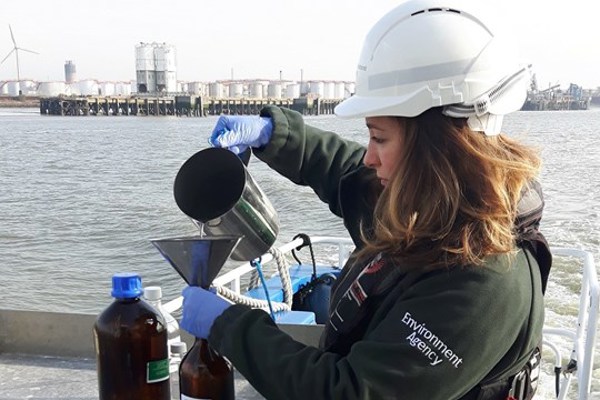
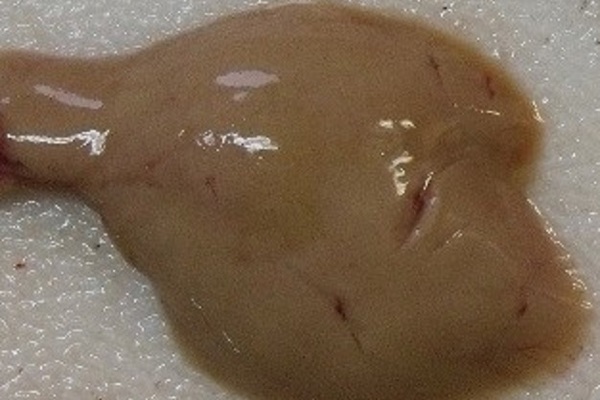

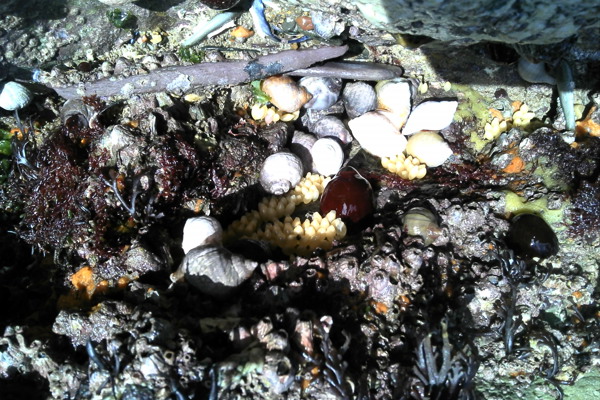

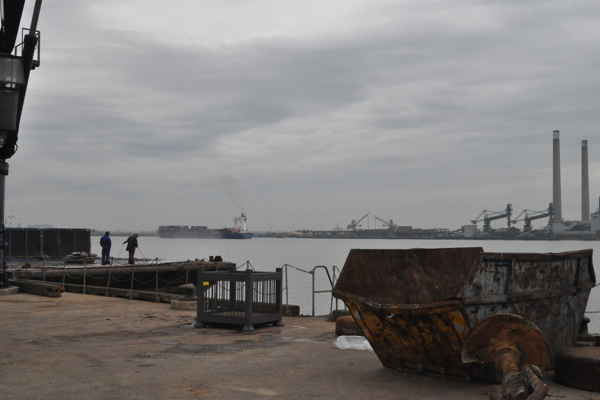
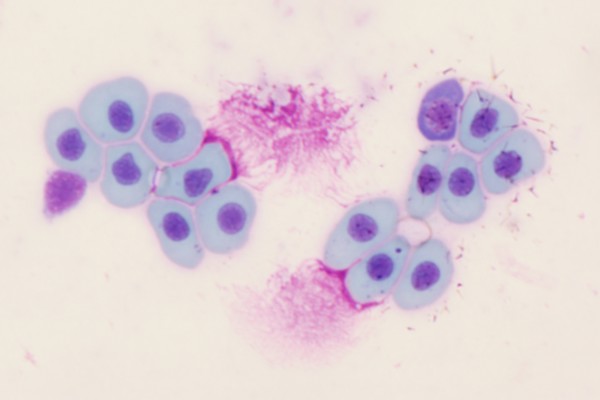

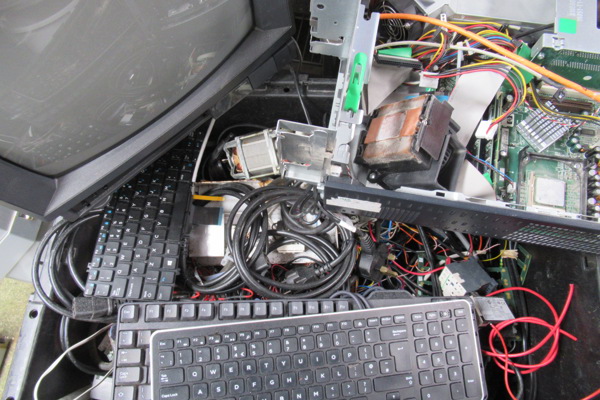


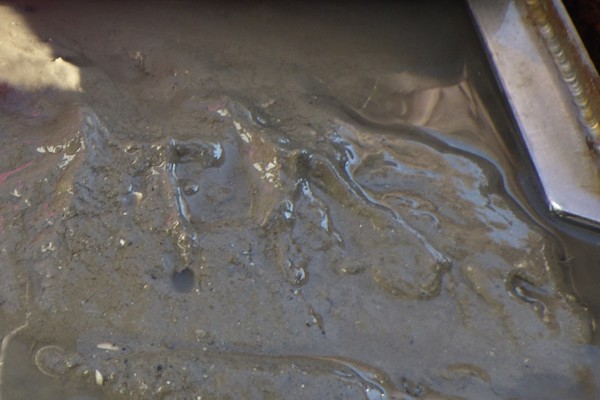
Drivers, activities and pressures affecting the state of the marine environment
-Local drivers with local influence such as industry outputs and wastewater from major cities. There are also hotspots of historic pollution, buried in sediments and released during storm events, dredging operations and ship movement. These latter sources can have a major influence on shipping lanes and harbour management.
- Land use and agriculture can have a more widespread impact, either via diffuse run-off or more direct diffusion from aquaculture.
It is also important to note that many contaminants particularly when found in sediments are persistent and do not degrade or only degrade very slowly in the oxygen/light free environment. Once captured in sediment it is thought that their biological impacts are however limited (unless re-suspended into the water column).
Impact of pressure on ecosystem services
Within the UK, the impact of current and past pressures from human activities collectively contribute to the presence of hazardous substances in sediments and biota. Such impacts lead to measurable biological effects such as hormonal and behavioural changes; reduced species fitness; reduced breeding success; and mortality. Specific ecosystem services affected include decline or potential extinction of marine populations; harvesting for commercial or leisure purposes; water and sediment quality regulation; nursery population and habitat maintenance; coastal protection and global climate regulation. Impacts on these ecosystem services can in turn impact on human activities such as recreation, tourism, fisheries and aquaculture, and inflict economic losses on individuals, enterprises and communities.
Impacts of climate change on pressures and state
The UK Marine Strategy assessment for contaminants did not factor in the impact of climate change on assessment outcomes. In general, temperature increases result in higher chemical reaction rates and could lead to higher biological uptake. A temperature increase of around 2˚C would increase reaction rates by about 20%. Increased temperature alone has been shown to affect the volatilisation of pesticides and of persistent organic pollutants (POPs). Temperature rise also means more rain, which leads to floods and higher run-offs of metals and POPs. For mercury, it has been suggested that the increasing temperatures, with related increasing hypoxia, fires and reduced ocean circulation, will increase methylmercury production in sediments, leading to higher releases from anoxic sediments to the overlying water columns. Increased storm frequencies could also lead to more coastal erosion (including of coastal landfills) and disturbance of sediments which are more likely to release legacy contaminants.
Climate change could outweigh the current measures in place to reduce the inputs of contaminants, especially the historic contaminants which are stored in sediments. Assessments could also become more difficult with the current sampling resolutions (number of datapoints and frequency) to assess trends and status as the data may become more variable due to the effects of climate change.
Management actions taken
The actions we are taking to achieve GES for contaminants are set out in the UK Marine Strategy Part 3 2025: Programme of Measures. Many national and international regulations have been put in place to prevent contamination. International regulations include:
• OSPAR (harmonised mandatory control system for offshore chemicals)
• Stockholm Convention
• Paris Convention
• Minamata Convention
• London Convention / London Protocol
National regulations include:
• Water Environment (Water Framework Directive) (England and Wales) Regulations 2017; The Water Environment (Water Framework Directive) Regulations (Northern Ireland) 2017 and The Water (Amendment) (Northern Ireland) (EU Exit) Regulations 2019; The Water Environment (Controlled Activities) (Scotland) Regulations 2011 and The Water Environment (Controlled Activities) (Scotland) Regulations 2011.
• UK Marine Strategy Regulations
• UK REACH Regulations
Given that most determinands are stable or declining, the management actions appear to be having a proactive impact. However, sources of contaminants still exist, and their extent is having an environmental impact. Careful consideration also needs to be given to new and emerging contaminants and how these should be managed.
Human activities and their associated pressures could see new or improved measures applied e.g., in waste disposal. However, coastal development could continue to disturb contaminants in seabed sediment (e.g., through dredging of sediments from shipping lanes and harbours).
Next steps
Evidence challenges
Our key evidence challenges focus on the development and testing of new indicators and validating appropriate analysis methods. Separate from indicator development, we need to:
- Better understand why some chemicals that are at higher levels than environmental thresholds do not appear to be having any biological impacts.
-
-
Oversee monitoring programmes which are separately managed by devolved governments to record changes at UK level to ensure co-ordinated action to maintain appropriate national coverage.
-
-
-
Improve our understanding of offshore renewables and the potential impact on increasing metal trends, whilst detangling such impacts from prevailing conditions like climate change.
-
Other headline issues include:
• Improving the links to and alignment with the Water Environment (Water Framework Directive) (England and Wales) Regulations 2017 and The Water Environment (Water Framework Directive) Regulations (Northern Ireland) 2017 assessments.
Operational objectives
Outside of formal measures to help us continue progress toward meeting GES the following operational activities will be undertaken.
-
The UK targets, indicators and indicator threshold values, and contaminants of emerging concern, will be reviewed in collaboration with OSPAR countries. The UK will continue to monitor relevant areas to assess if current measures are working. Changes in assessment standards will be scrutinised and their impact on compliance and measures considered.
-
We will also work both nationally and with other countries to identify emerging chemicals likely to pose significant risks to marine life.
-
We will continue to review and refine monitoring programmes nationally and in OSPAR, focussing on areas where there is the greatest risk of exceeding threshold values to check whether existing measures are working, whether new measures might be needed, and to target emerging contaminants.
-
Prevent or reduce discharge and mobilisation of pollutants from land with greater direct join-up between marine and terrestrial regulatory regimes.
-
We will continue to maintain alignment with all international conventions we are party to, including OSPAR, the Stockholm Convention, Paris Convention, Minamata Convention, and London Convention / London Protocol.
Technical Detail: Good Environmental Status for the next cycle
Table 3. GES criteria and targets for Contaminants for the next assessment
Overarching target: The UK concentrations of contaminants in water, sediment, or biota are kept within agreed levels and these concentrations are not increasing; and the effects of contaminants on selected biological processes and taxonomic groups, where a cause/effect relationship has been established, are kept within agreed levels.
|
Criteria |
2024-2030 GES targets |
Comment |
Indicators |
|
Concentrations of contaminants in coastal and territorial waters |
Concentrations of substances identified within relevant legislation, and international obligations are below the concentrations at which adverse environmental effects are likely to occur. |
This wording better reflects OSPAR assessments and the original MSFD wording, allowing for more effective read-across between assessments. |
As used in this assessment: Metals in biota and sediment PCBs in biota and sediment PAHs in biota and sediment PBDEs in biota and sediment Inputs of metals from water and air Radionuclides Chemical status in water – wider chemicals
New for 2030 assessment: PCBs in marine mammals PFAS in sediment and biota |
|
Health of species and condition of habitats |
The intensity of those biological or ecological effects due to contaminants agreed by OSPAR, as appropriate for UK Marine Strategy Part One purposes, are below the toxicologically based standards.
|
This wording better reflects OSPAR assessments and the original MSFD wording, allowing for more effective read-across between assessments. |
As used in this assessment: External fish disease index EROD activity Micronucleus test Liver neoplasm Imposex in dogwhelks
New for 2030 assessment: AChE inhibition |
|
Impact of significant acute pollution events on species and habitats |
Occurrence and extent of significant acute pollution events, and their impact on biota affected by this pollution, should be minimised through appropriate risk-based approaches. |
This wording better reflects OSPAR assessments and the original MSFD wording, allowing for more effective read-across between assessments. |
As used in this assessment: Number of spills including oil spills
|
|
Occurrence of significant pollution events |
Occurrence and extent of significant acute pollution events, and their impact on biota affected by this pollution, should be minimised through appropriate risk-based approaches. |
Note: This Target is now the same as the above, only one indicator used across both, so makes sense to combine the two targets from 2019 into one Target going forwards. |
As used in this assessment: Number of spills including oil spills
Note: these indicators are the same as above, as combining two Targets into one going forward. |
Additional information on the new indicators to be developed for the next assessment:
-
An indicator to assess the effects of PCBs on marine mammals will be developed within the UK and possibly in conjunction with OSPAR. The UK has sufficient data to implement a PCBs in marine mammals' indicator.
-
Furthermore, an indicator for perfluorinated alkylated substances (PFAS) in sediments and biota will be required as OSPAR has added PFAS to the list of chemicals for priority assessment (LCPA) and the CEMP monitoring programme. The standard suite of 24 PFAS compounds will be included in monitoring programmes. This indicator will be developed in conjunction with OSPAR.
-
A new biological effects indicator for Acetylcholinesterase (AChE) inhibition to analyse the effects of organophosphate and carbamate compounds has been proposed by Cefas and then to the Biological Effects Working Group within the International Council for Exploration of the Sea (ICES). The UK already has 9 years of monitoring data from England and Wales, but no data from Scotland. Currently, there is a need to establish Background Assessment Criteria (BAC) from the existing UK data as these cannot be directly compared to current OSPAR criteria due to the method used. We would expect to have results by the next UKMS assessment, and this will be a UK indicator.
References
Contributors
E. E. Manuel Nicolaus (Cefas); Lynda Webster (Marine Scotland Science), Mark Charlesworth (Natural Resources Wales)
Acknowledgements: Jon Barber





